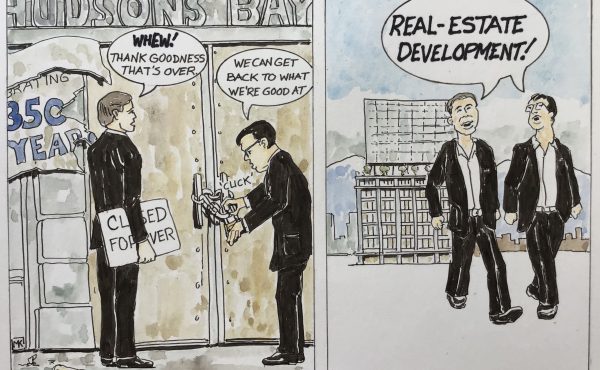
Author: Norman Crowe and Paul Laseau (John Wiley & Sons, 2012)
As children, we all loved to draw. Be it for recreation or otherwise taking a pencil, pen or marker to paper was something that was extremely enjoyable. Houses. Flowers. Dragons. People. And all sorts of other weird and wonderful things were created without self-consciousness or inhibition. It was just plain fun and was one of the primary means we interacted with – and learned about – the world around us. 
Given that drawing predates the written word and that wide-spread literacy is a relatively recent phenomenon, drawing was one of the primary means of communication for human civilization for the vast majority of our time on this earth. As such, we owe much of humanity’s finest achievements to this humble act.
These two basic facts make our perception of drawing as we mature and grow into adulthood that much more peculiar – as most people choose to replace one form of drawing (the representational and abstract depictions we practice as children) for another (writing) and claim the former as being the domain of the arts-related fields.
This is simply not the case and as Norman Crowe and Paul Laseau clearly showed in the first edition of Visual Notes For Architects and Designers written in 1984, such a distinction is clearly detrimental to learning and thinking as a whole – particularly for those who seek a more sophisticated understanding of the world around them, in the broadest sense. Twenty-eight years and a digital revolution later, Crowe and Laseau have updated and expanded on the themes introduced in their first edition.
The book is broken into six compact chapters – Introduction, A Guide to Note-Taking, A Journal, A Collection of Visual Notes, Transitions to Design and an appendix that is the Tools and Techniques chapter of the original book. The latter has been replaced by Transitions to Design. As in the first edition, each chapter is filled with a vast array of grey-scale sample illustrations and drawings—which make up the majority of the book.
Aside from the use of a cleaner font and some new images, the first three chapters remain quite similar to the original book. The Introduction establishing the concept of “visual notes”—defined by the authors as “…the graphic equivalent of of written notes…recording information which primarily visual and, therefore, could not be recorded as effectively with words.”
It explains the relevance of this method of notation by carefully differentiating it from written and photographic explanation, and its role in helping people move beyond superficial observation and how it contributed to thinking effectively. Furthermore, the authors explain and argue for developing visual literacy – understanding and expressing visual messages – and how this important skill of how to read and interpret the world around us remains poorly developed in our society.
It ends with encouraging people to reengage their childhood innocence by drawing without hesitation or a thought towards a beautiful end product. And instead, see it as an act in itself (akin to writing) that is extremely effective for gathering and filtering complex information.
This springboards into the second chapter—A Guide to Note-Taking—that describes the fundamental process of visual note-taking and divides the latter into the three basic activities of recording (gathering information) , analysis (understanding relationships) and design (generating a specific solution to a given problem). Each of these if then subdivided into useful subsections and explained as a combination of other skills as well as how visual notation relates to each.
Although the content and depictions are geared towards “designers” and the built environment, the accessible and straightforward explanations are relevant across disciplines and really set a great framework of understanding.
This seamlessly leads into the third chapter – A Journal – that serves to give the reader a solid example of an accumulation of visual notes in the form of a (visual notes) journal. In the tradition of typical written journals, the authors frame the chapter by explaining how this form of collecting and recording can become a significant instrument for inducing connections between seemingly unrelated events/experiences over time.
Towards this end, the chapter, itself, is a selection and reassembly from pages of an existing journal that recount fragments of journeys, experiences, thoughts and discoveries of its author (an architect) over a period of about five years. Each entry is a wonderful accumulation of text, drawings, and diagrams that bring readers along with the author as he travels and analyzes different places he has traveled.
The chapter appropriately ends with a design study for a university complex that demonstrates how the discoveries with each unrelated journal entry contributed to the development of a design proposal. This ties the earlier “fragments” and concepts of recording, analysis and design in the previous chapter together extremely well.
The fourth and fifth chapters—A Collection of Visual Notes and Transitions to Design respectively—are were the most change and improvement has taken place. These, to me, are the most powerful and interesting chapter, and what truly demonstrates the relevance of visual note-taking more broadly. Simply put they are a simple compendium of different visual notes created by a variety of people across different fields. From architects through scientists, this chapter speaks very well to how drawing and visual note-taking helps people communicate effectively. The diversity of drawing techniques is excellent, showing everything from doodles to beautiful perspective drawings.
Having reviewed it years ago, my one strong criticism of the first edition was that the chapter that included the examples (then only A Collection of Visual Notes) was cut too short. At only 35 pages, I wanted to see more examples of how drawings are used by different people as means of both demonstrating the importance of drawing as an act of thinking as well as dispelling the drawing self-consciousness common to most people.
As such, the inclusion of the new Transitions to Design chapter was a wise one in two key way: it adds more examples and updates the content of the original book to include the impact of new digital technologies such as, scanners, digital renderings, iPad drawings and iPhone sketches. Although this chapter favours examples from architects and designers, its inclusion is important to the ongoing discussion and evolution of drawing.
A brief conclusion closes the chapter – with the interesting Epilogue by architect Thomas Beeby of the original edition getting omitted completely.
The Tool and Techniques appendix gives the reader practical advice on keeping a visual notebook. From equipment suggestions to drawing techniques, tips, and conventions, this section gives the reader a pretty good overview. This is meant to be a quick reference versus a comprehensive summary, which the authors clearly state at the beginning of the chapter.
As a designer, teacher, drawer, husband to an avid doodler and father to two curious children, I continue to believe that the second edition of Visual Notes is an excellent book to have on ones shelf. Having said that—and although the new design-focused examples clearly makes the second edition more in line with the title—the addition of more examples outside the design discipline would have strengthened the book and its overall message. Nonetheless, the updated content builds on the best of the original edition and makes it more relevant to the world today.
As such, it remains a great book for anybody looking to get a better understanding of the world around them through developing a visual thinking….or simply those wanting to reawaken the child in themselves.
***
For more informations and a look at a sample chapter, visit the Wiley website.
**
Erick Villagomez is one of the founding editors at Spacing Vancouver. He is also an educator, independent researcher and designer with academic and professional interests in the human settlements at all scales. His private practice – Metis Design|Build – is an innovative practice dedicated to a collaborative and ecologically responsible approach to the design and construction of places.




